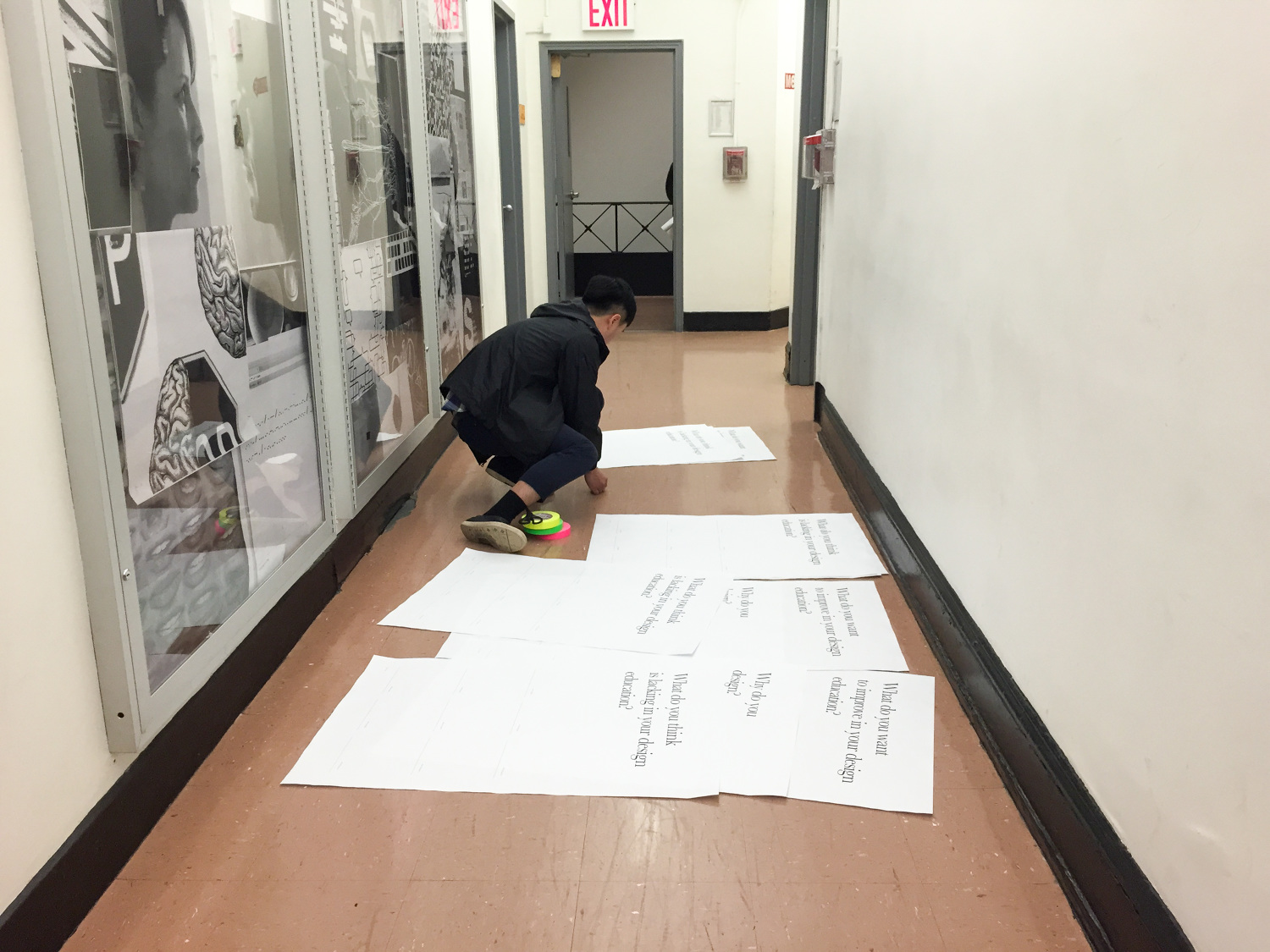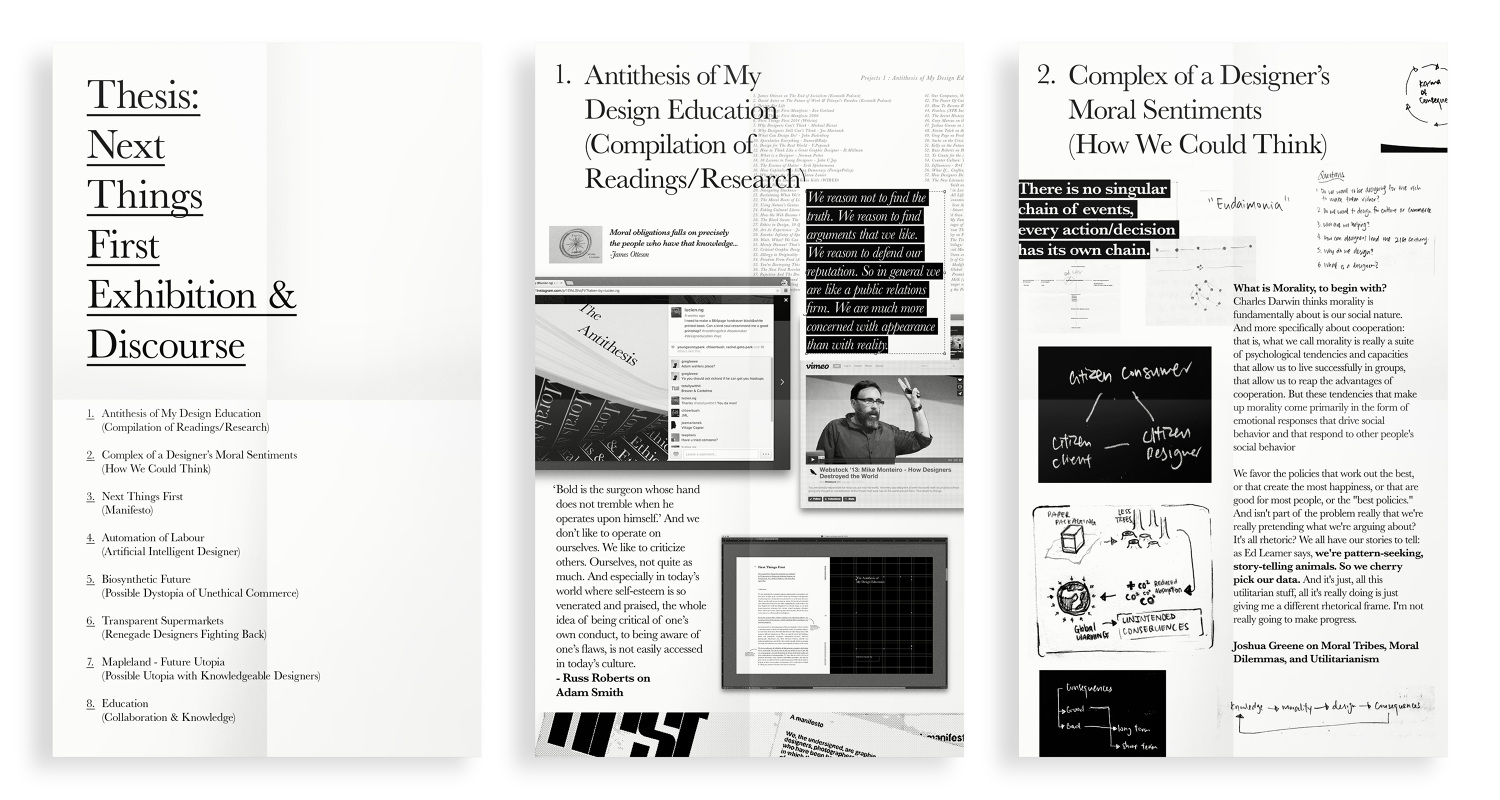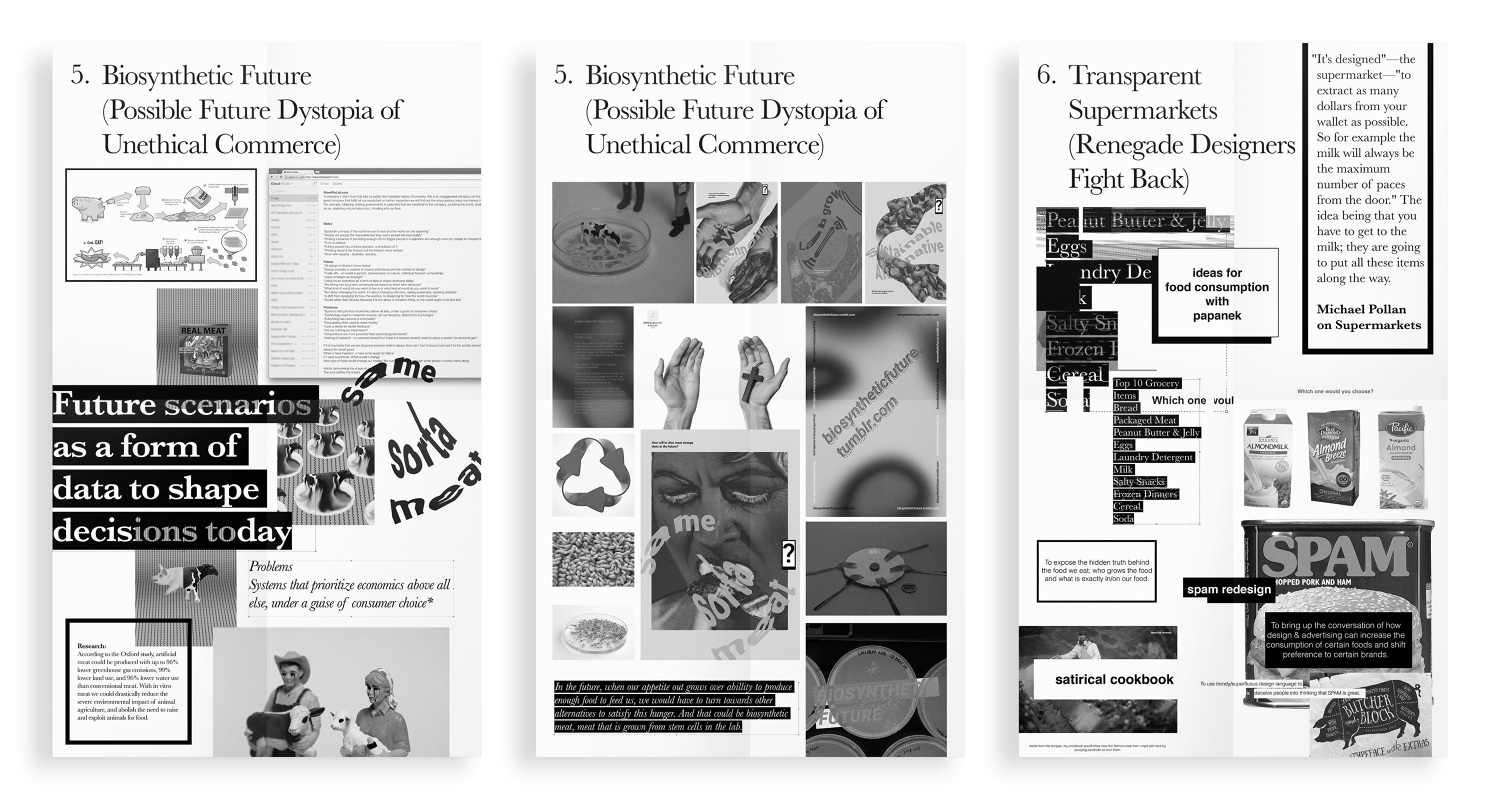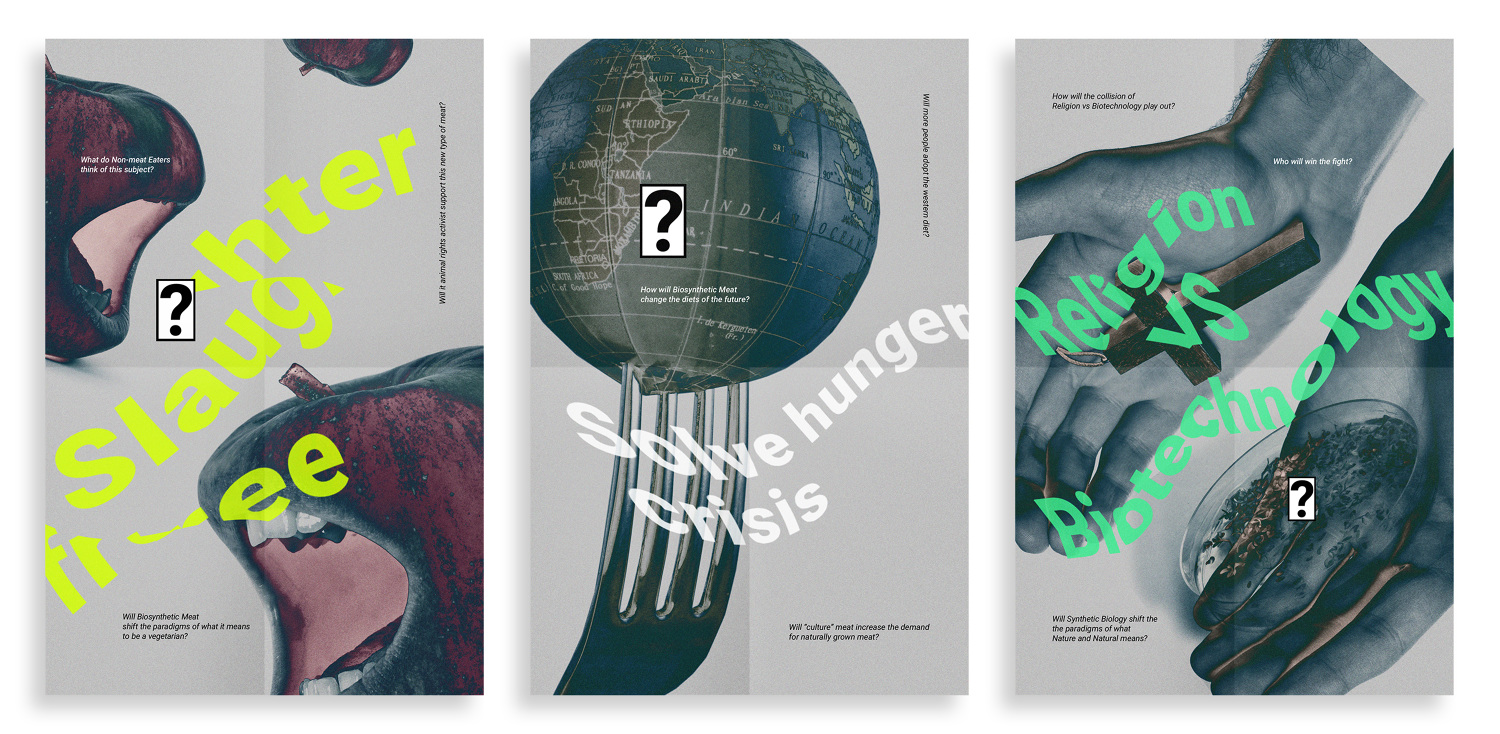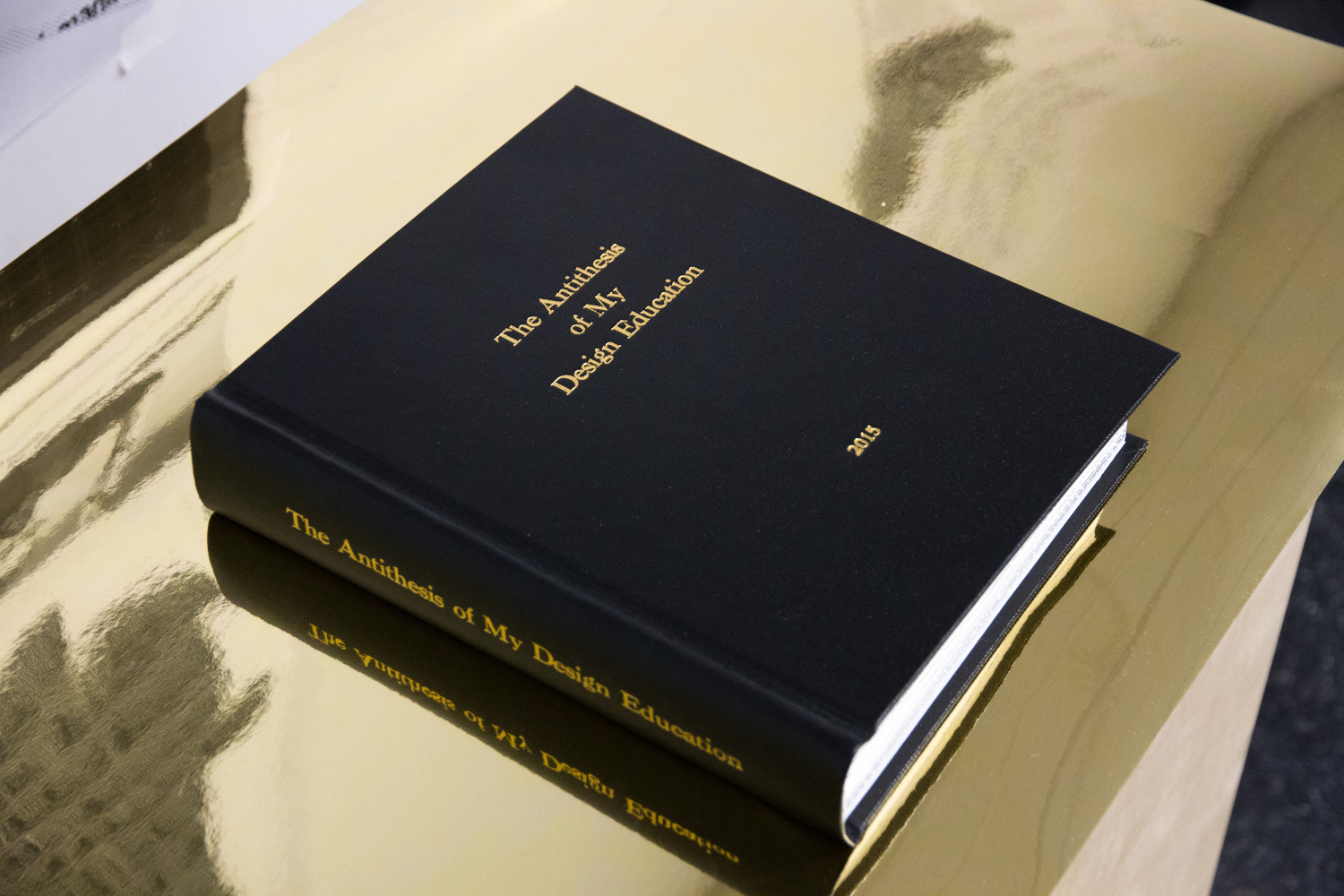Nov 30, 2015 8 Questions With: Lucien Ng
On a Wednesday evening, in a classroom at the School of Visual Arts in New York, someone is there that shouldn’t be.Lucien Ng took all necessary steps to follow procedure, requesting school administration for permission to utilize one of their classrooms as a temporary exhibition space, but he was denied. Why? At any given time there are unused classrooms. It was only to be a one night event. He was about to graduate from that very school. It seemed unreasonable.
Ng was preparing to show an eight part project called “Next Things First”, that is the culmination of research, experimentation and inquiry into the social responsibilities of graphic design- and perhaps of cultural production at large. Central to his thesis are the ways in which art schools, reflecting the capital driven society to which they belong, can fail to prepare young designers for sufficient critical engagement with the world and responsibility for the work they put out into it.
The classroom setting, central to how Ng wanted to present the exhibition, could not be given up on so easily. So there he was, slipping into an empty room and spreading his work on the walls and on the floor in guerrilla fashion.
Soon after this, Ng achieved a coveted position at a renowned graphic design firm. His art school education had succeeded in its apparent mission, successfully grooming the young designer for immediate entry into the industry. However, as someone who has proven his streak of independence, Ng was perhaps once again somewhere he shouldn’t be.
Ng has now struck out on his own- forging his own path and attempting to embody the ideals that he continues to develop through a unique design practice that often offers as many questions as definitive solutions.
1. Hi Lucien, can you share a little bit of your personal background and the focus of your work in design?
I’m a New York based Art Director & Designer from Singapore. Before coming to New York, I was working in an advertising agency trying to sell a charcoal formula shampoo to the global market through branded online games, banners and print ads. And on the side, I designed event flyers for nightclubs because I thought it would be cool. After that I moved to New York to get my Bachelors at The School of Visual Arts, which lead me to work at Wieden+Kennedy and Sagmeister & Walsh.
Besides the commercial work, I create things in different shapes and forms that challenge assumptions and preconceptions of the world we live in.
2. Can you tell us about your project Next Things First?
Next Things First started out as questions that I was asking myself everyday—who are we designing for; who are we really helping; do we want to design for the rich only to make them richer; what is the role of design in the world; and most importantly, how can we have a moral practice as designers? Through an arduous process of introspection and researching, inside and outside of design, I arrived upon Next Things First, which consists of 8 chapters that challenge the assumptions and perceptions of our daily lives, especially people/designers who want to save the world. (If only making everything sustainable can save the world)
3. How have deficiencies in your design education led to the foundational ideas of your practice?
Looking back, while growing up in Singapore, I never had a holistic education. I grew up in a top-down system which decided for me what I should and should not be learning. And coming to the United States, it was better but still pretty much the same, there was no formal collaboration among the different disciplines in school, nor was there any expectation for students to look beyond their bubble. In Michael Bierut’s essay ‘Why designers can’t think’ he talks about the polarization of design school practices, and our illiteracy of the world outside of design. It makes me wonder why schools are not collaborating with each other, sharing different ideas and growing together as a collaborative community instead of being enemies.
By nature, I am very curious and critical, so being in those enclosed environments has only lead me to desire more knowledge. I like to think creativity is just like cooking- knowledge and collaboration are your ingredients and if you only ever have one ingredient, the dish will forever remain one dimensional.
4. How do you feel young designers are set up on un-critical trajectories early on?
Through research and experience, I’ve come to understand that the idea of a ‘moral design practice’ is not as simple as it is to say. If we view ‘morals & ethics’ objectively, to claim to be moral would be to take a side and judge the opposite as immoral, and who are we to judge our fellow men- it incapacitates us in understanding others. But that being said, it is disheartening to see young designers who are simply unaware of the ramifications of their design. I’ve met many designers who tout their desire to save and change the world with design while working on destructive advertising, which is ironic and counter intuitive.
As designers, we have a responsibility to seek the truth, and ask the necessary questions before we package anything up in fancy boxes with bright colors, slick typography or beautiful models that entice people to buy. But at the end of the day, it boils down to a lack of awareness. I don’t believe they want to go down this route, but I believe they are unwittingly letting themselves go down this route because on each issue that comes up, people look at their separate self-interest instead of the broader interest. After all, moral obligation falls on the people who have that knowledge.
And I do understand the implicit circumstances of a young designer who needs to pay rent, student loans and survive.
5. How can arts education be complicit in furthering this?
The issue isn’t explicit to art schools, there would be no art schools if there were no business, science and technology, math, sports, so on and so forth. The problem lies with us and education, because there is no expectation on us to be critical or self aware in society, and in turn we do not educate the young to grow up that way.
When we live in a commercial society, people begin to be confused of what the goals in society are, and what that means is, they begin to think that the generation of wealth can become an end in itself and that having wealth is everything you need to lead a fully flourishing eudaemonic life. But part of education is not just teaching each new generation how to generate wealth but also what components of a life well lived really are and the relation between those two. Our education is too focused on the job market as opposed to the life well lived, and we are confusing what is necessary for what is sufficient.
6. Labor is already automated in many industries, but creative laborers often feel immune behind a prevailing idea of dependence on subjectivity/singular creative voices. Your video “Artificium” argues that perhaps designers should not be so confident about this. How has saturated image culture made it even more plausible that design work could be removed from human hands?
The saturation of image culture has helped many designers achieve the success they have today. All of us have learned through absorbing the thousands of imagery we see on a daily basis, we have built an internal visual library larger than any generation has ever had before. But because of that, it has lead to a visual sameness in the industry. And also because most clients in the commercial industry want something that looks similar to what their competitor is doing too. So if everything looks the same, and there is also a lack of thought, I believe that most of the work can be automated.
7. Your work often deals with some kind of future hypothetical, which by nature requires you to question how we might arrive there from the conditions of today. How can a designer implement this kind of awareness to their daily work, especially in client-based work which may or may not care less?
Since all design is inherent future facing, we have to be knowledgeable of the world outside of design to have some level of awareness, and even if the client doesn’t care, it is our duty as a designer to inform them about it. And this is one of the hardest things to balance, as the main purpose of a business is to make profit but sometimes we need to remind them to not only look at the short term benefits of self interest but also the long term benefits of collective interest. There is this parable called ‘Tragedy of the Commons’ told by ecologist Garrett Hardin that captures the problem of individuals acting out of self-interest.
8. What projects are you working on now that we can look forward to?
I am currently in the midst of starting my own practice that focuses on working with cultural, educational, art and civic clients. And I have two other personal projects on the back burner, one is about capitalism as a religion and the other about a future when Donald Trump is president.



